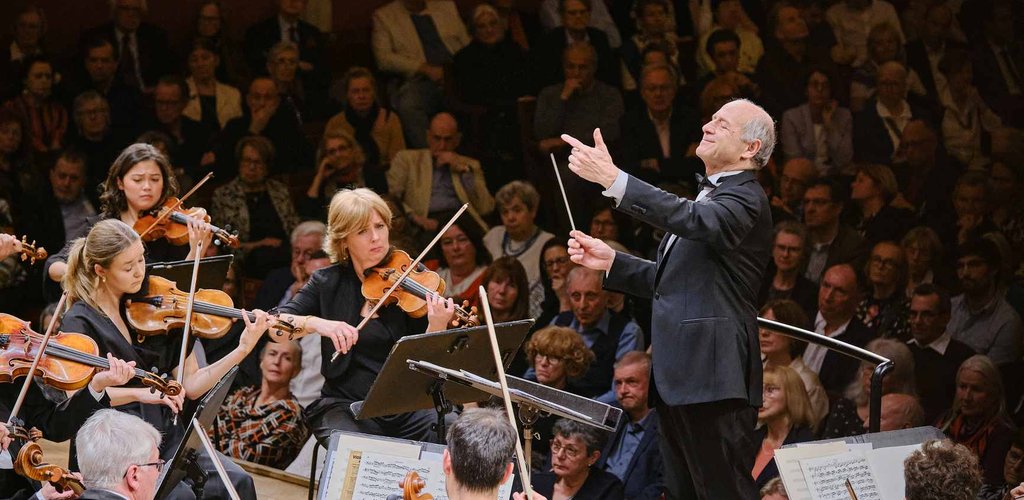The Budapest Festival Orchestra’s October 15 performance at Vienna’s Konzerthaus of a selection of Brahms’ music featured a line-up that Hungarian audiences have never heard. The solo of the Violin Concerto in D Major was performed by Nikolaj Szeps-Znaider; also on the program was the third of the composer’s symphonies. The concert was such a resounding success that even this Viennese audience, always respectful of concert etiquette, erupted in applause between the movements of the concerto. Read on for excerpts from two concert reviews.
The performance was the third in a series of four Brahms concerts at the Konzerthaus in Vienna: on its February tour, the BFO performed the Piano Concerto in B Major and Symphony No. 2; in May, the ensemble played Brahms’ Double Concerto in A minor and Symphony No. 4.
Writing for Die Presse, Jens F. Laurson highlighted above all the “triumph of craftsmanship over showmanship,” noting that there was “no posturing, no smoke and mirrors” on the part of the conductor, and that the orchestra showed “full command over the score” with its performance of the symphony. “Fischer and Znaider both went for a nicely unsentimental, not-too-sweet tone yet with plenty of romantic freedom: Flexible phrasing, liberal portamenti, all while building on the dark sound of the orchestra. More buoyant than energetic, more flexible than suspenseful. Even the oboe, gifted the finest melody of the work, didn’t indulge and went for clear lyricism instead of schmaltz.”
Laurson was not disappointed by the symphony, either, during the second half of the performance: “In the rhythmically tricky Third Symphony of Brahms, the Orchestra under Iván Fischer showed full command over the score. Without much of a fuss, they started with the Allegro con brio. The shifted pulse that the second violins answer the first violins with came to the fore beautifully. It was helped by the antiphonal seating, with the violins facing each other on either side of the orchestra. The double basses were happily plucking away amid the swinging rhythm or, when called upon, drove their colleagues on with furious strokes.”
Giving the performance five stars, the musical portal Bachtrack similarly lauded the proportionality of the musical approach: Iván Fischer “conducted a heart-bursting rendition that was purposeful without being driven too hard, tender but maintaining the flow of the music; in short, trusting the score. Fischer’s gestures were light, inviting his players to collaborate, gently maintaining the beat with his lengthy baton; aggression was limited to the occasional clenched fist.” The performance of the symphony radiated the depths of the piece from movement to movement. In the first, the conductor “turned the screw on those chords at each first movement reiteration, tightening the drama;” later, he “allowed the Andante to breathe while maintaining a pulse, the lyrical third movement was beautifully fluid – no sappy sentimentality here – and the finale erupted stormily before gently unwinding to its contented resolution.” Critic Mark Pullinger praised the orchestral sound and highlighted the role of Péter Szabó, who led the cellos passionately, as well as the vigorous performance of Uxía Martínez Botana and her double bass colleagues.
Discussing the concerto, Bachtrack also celebrated Szeps-Znaider’s “breathtaking, gripping” performance, noting that the soloist was not “playing to the gallery” but instead “collegially join[ed] the orchestra” and was “often playing as if for himself, eyes closed, completely bound up in his love for the music.”
The Budapest Festival Orchestra is known for concluding its concerts with memorable and significant encores, often noted by the critics. Similarly to other stops on the Brahms tour, the performance in Vienna also featured the composer’s Abenständchen. Reviews of the Vienna concert did not fail to mention the moving rendition by the orchestra’s choir of Brahms’ song, calling the performance yet another symbol of “the great spirit in this great orchestra.”
